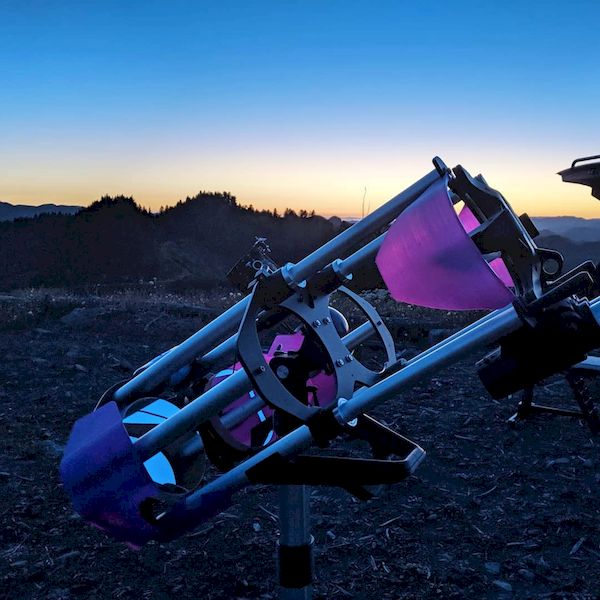![The 3D printed Drifter binocular telescope [Source: Analog Sky]](https://fabbaloo.com/wp-content/uploads/2020/05/image-asset_img_5eb090e964320.jpg) The 3D printed Drifter binocular telescope [Source: Analog Sky]
The 3D printed Drifter binocular telescope [Source: Analog Sky]
This week’s selection is the Drifter Rich Field Binocular Telescope by Analog Sky.
We’ve seen 3D printed telescopes previously, and in fact have featured three: the ABSDBS, the PiKon and most recently TelescopePrime. But the Drifter is quite different. Those other projects essentially were using 3D printing to replicate existing telescope designs, but the Drifter leverages the technology to create a new style of telescope with many interesting features.
There are multiple telescope designs, such as the Dobsonian, Schmitt-Cassegrain, etc, but the Drifter is a binocular telescope. This is a radically different design because it is intended to be used with two eyes, rather than the single eye used on other telescope designs. It’s much like a very large set of binoculars, except fixed on a mount.
3D printing allowed easy design of this configuration because one side could be instantly mirrored to create the other side. The design includes two 8” mirrors, making the Drifter able to gather as many photons as a 12-16” single mirror telescope, but with far less weight.
The dual eyepieces allow for a massively larger field of view through the telescope. This makes it far easier to use, and in fact is quite good for casual visitors to instantly view objects successfully. This is otherwise somewhat challenging with single eyepieces where you have to have your eye lined up perfectly.
The designers of the Drifter took the opportunity to design in a number of convenience features, such as the magnetically released eyepieces. Filters are inserted almost instantly. These will be of great interest to many telescope operators.
Many of the parts on the Drifter are 3D printed, which has led to its highly unusual appearance. To some it might not even look like a telescope.
Apparently they decided to 3D print the parts in nylon and then dye them an attractive purple.
![3D printed parts for the Drifter binocular telescope [Source: Analog Sky]](https://fabbaloo.com/wp-content/uploads/2020/05/image-asset_img_5eb090e9b5d7b.jpg)
Currently the design is being perfected, and the creators at Analog Sky intend on launching the product, perhaps as a kit, through a crowdfunding program sometime this year.
What’s most interesting to me about this project is that the design was enabled by 3D printing, leading to a new concept previously unknown. That’s the true power of 3D printing: the ability to unleash impossible designs.
Via Analog Sky and Universe Today

